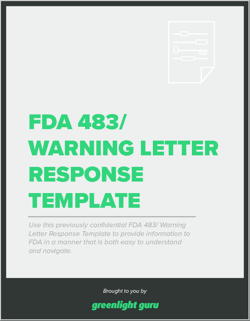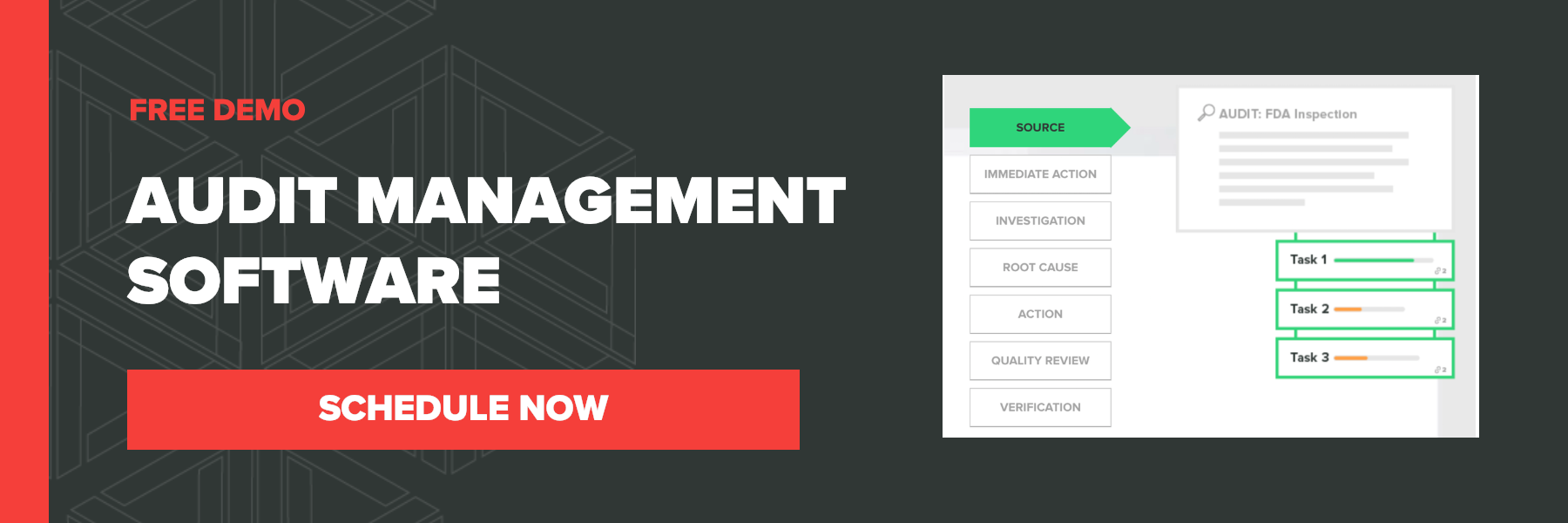
How much does it cost to address FDA 483 observation and warning letter issues?
Unless you have been through this, you probably have no idea.Maybe you are involved with medical device product development and don’t think a FDA inspection is anything you need to be worried about.
You would be wrong.
And it might cost your company $400,000 to find out.
This is a story I recently heard from a medical device startup who lost over $400,000 dealing with the aftermath of a FDA inspection.
The $400,000 mistake
The medical device company had successfully raised several million dollars during four rounds of funding to design and develop a couple class II medical devices.
It took them about four years from start to launch. They needed every, single dollar raised to bring their products to market.
Success.
To establish what this company was able to do is a feat that few are actually able to accomplish.
All was good until about 18 months after their launch. This is when the FDA inspectors arrived.
Sadly, for them, they realized after the fact that ALL the issues identified by FDA could have been addressed prior to going to market with their new medical device.
Let me elaborate on the mistakes this company made.
Free Bonus Giveaway: Click here to download your FDA 483 / Warning Letter Response Template.
Pretend FDA will not inspect your company
Did you know that all class II and class III medical device companies in the U.S. are subject to a FDA inspection every two years?
This company seemed to think that for whatever reason, FDA would not be showing up to inspect them.
If you think this too and do not make preparations now, your FDA inspection will be a horrible, horrible experience.
Note, I have participated in several FDA inspections and we were prepared. Despite this, the experience was still not fun.
Imagine not taking any actions at all to be ready for the FDA.
Lack of Risk Management
It is expected that top management reviews, evaluates, and approves the risks associated with the medical device of their company.
The top management of this company did none of these things.
The FDA inspector asked for the product risk management files.
There was evidence of a FMEA conducted on the products.
FDA asked for the rest of the risk management documentation.
Nothing.
-
No Risk Management Plan
-
No Risk Management procedure
-
Nothing defined for Risk Acceptability
-
No evidence of Risk Controls
The FDA inspector asked if the company was aware of ISO 14971 and if the company had a copy of this standard.
Crickets.
FDA then explained the expectations of Risk Management.
Ignore Design Controls
Is it possible to get FDA market clearance without documenting your Design Controls?
Sadly, I’m afraid to admit, it is very possible to get market clearance and completely ignore Design Controls documentation (note, this is not what is intended).
Sadly, many companies take this troublesome path because of the illusion that doing so will save time and save money.
Sadly, this medical device company decided to take this path in at attempt to be “capital efficient”.
FDA hammered them.
The FDA inspector asked the company to provide the Design History Files for their two products.
Uh, what?
The FDA inspector had to explain what a DHF is and patiently showed the 820.30 regulations.
The resources at the company scrambled to retrieve engineering notebooks, scoured computer hard drives and server folders, and so on to try and find objective evidence of Design Controls.
The scramble results were significantly deficient.
Some of the findings included:
-
No evidence of a Design & Development Plan
-
Design Inputs were incomplete
-
Design Verification did not demonstrate the Design Outputs met Design Inputs
-
No evidence that the medical device was transferred to manufacturing
-
Lack of Design History Files
Let me give you a hint:
Design Controls are the #1 issue cited during a FDA Inspection.
No Device Master Record
The company did not formalize device master records for their products.
Some drawings and specifications existed. But the documentation required to manufacture and inspect medical devices were severely lacking.
Production personnel were working from non-controlled prints and documents--none of which had been approved or maintained under revision control.
The company was very fortunate to have a highly skilled workforce. Thankfully, these resources were able to produce devices that did not have quality issues at point of use.
Put off establishing a Quality Management System
The company saw little value establishing a Quality Management System during design and development.
And after getting FDA 510(k) clearance, all effort was put forth in launching the product into the marketplace.
No one was charged with ensuring a Quality Management System was defined and implemented.
When asked, evidence of a few procedures was produced from some product development process and a supplier list.
Free Bonus Giveaway: Click here to download your FDA 483 / Warning Letter Response Template.
Pay now or pay later
The FDA came down pretty hard on this company. They put the company products on a shipping hold and required the company to address the citations before products could be sold again.
It took the company 9 months and cost over $400,000 in consulting, testing, and effort to fix all the mistakes.
This doesn’t count the revenue lost during that period of time or the reputation of the company.
Had the company paid attention to risk management, design controls, DMR, and QMS during the product development process and prior to market launch, they could have addressed every single one of the shortcomings for a fraction of the $400K cost to repair.
Is it worth it to you to take this unnecessary business risks for your medical device company?
Jon Speer is a medical device expert with over 20 years of industry experience. Jon knows the best medical device companies in the world use quality as an accelerator. That's why he created Greenlight Guru to help companies move beyond compliance to True Quality.
Related Posts
Top 9 Reasons Device Makers Received FDA Form 483 and Warning Letters in 2015
Design Controls are the #1 Most Cited Issue with FDA
The Definitive Guide to Responding to FDA 483 Observations and Warning Letters
Get your free resource
FDA 483 / Warning Letter Response Template










